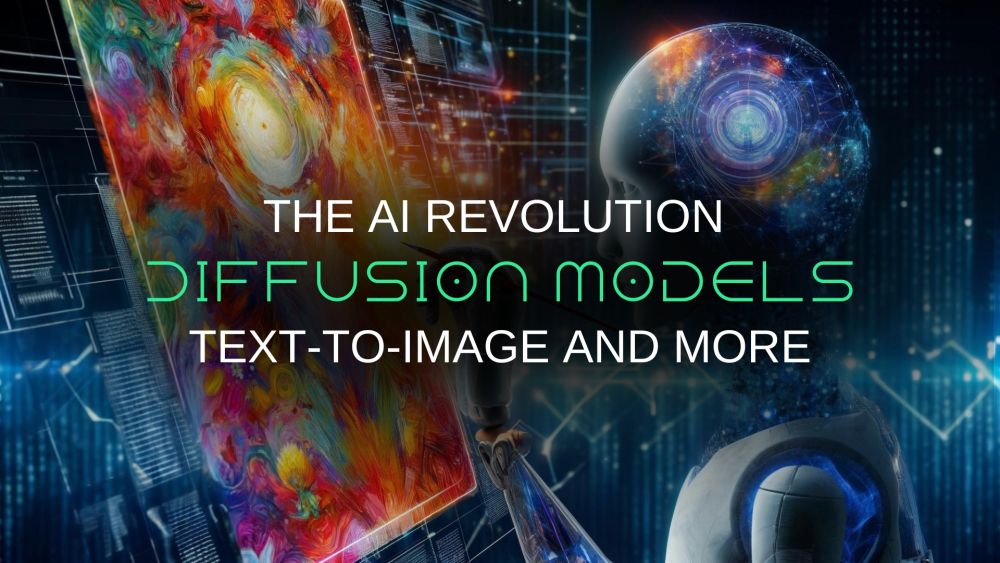Diffusion Models: The AI Revolution Behind Text-to-Image and More
Simple Definition
Diffusion models are artificial intelligence that can create realistic images, audio, and other data. They work by learning how to reverse a process of gradual noise addition, essentially learning to "denoise" an image back to its original form.
Technical Definition
Understanding Diffusion Models
Diffusion models are generative models that learn the underlying data distribution by gradually corrupting training data with Gaussian noiseGaussian noise, or normal noise, refers to statistical noise with a probability density function equal to that of the normal distribution, also known as Gaussian distribution. and then learning to reverse this corruption process.
Gaussian noise is added to the data during the training phase of diffusion models. This noise follows a normal distribution, gradually obscuring the data. As the model trains, it learns to predict and reverse these noise additions, effectively denoising the data to generate clean outputs.
Definition with a Metaphor
Imagine a drop of ink slowly diffusing into a glass of water. At first, the ink is concentrated, but over time, it spreads out and mixes with the water. Diffusion models work by learning how to reverse this process, starting with the "mixed" state and separating the ink back into its original drop. In image generation, the "ink" represents the original image, and the "water" represents random noise.
How do Diffusion Models Work?
The key idea behind diffusion models is to learn the data generation process by gradually adding noise to training data over a series of timesteps and then learning to reverse this noising process to construct new samples. More specifically, a diffusion model works in two stages:
- Forward diffusion process: Gaussian noise is iteratively added to the training data over many timesteps until it is destroyed and becomes pure noise. This yields a sequence of increasingly noisy versions of each training example.
- Reverse diffusion process: A neural network is trained to learn to remove the noise at each timestep, reversing the forward process. The model can generate new data samples by applying the reverse process to pure noise.
Intuitively, the model breaks down the complex task of data generation into many small denoising steps that are easier to learn. The model can transform unstructured noise into coherent, realistic samples from the training distribution by stitching together the denoising steps.

Diffusion Applications
Diffusion models have already made an impact across many fields. Some exciting applications include:
- Text-to-image generation: Models like DALL-E 2,3 , Imagen, and Stable Diffusion can generate photorealistic images from open-ended text descriptions, enabling new visual communication and creativity.
- Image editing: Diffusion models can be used to modify parts of an image, reconstruct missing regions, enhance resolution, or translate between visual styles. They have potential uses in photography, design, and visual effects.
- Video generation: Diffusion models can synthesize coherent video clips by modeling the temporal dynamics, with applications in entertainment, simulation, and robotics.
- Drug discovery: Diffusion models can accelerate the search for new therapeutic compounds by generating molecular structures with desired chemical properties.
- Audio synthesis: Diffusion models can generate high-fidelity speech, music, and sound effects, enabling new possibilities in audio production and voice interfaces.
Expert Q&A
Q: What are the advantages of using diffusion models over other generative models?
A: Diffusion models offer several advantages:
- High-quality sample generation: They excel at generating high-fidelity and diverse samples.
- Flexibility: They can be applied to various data modalities, including images, audio, and text.
- Strong theoretical foundation: They are based on solid mathematical principles and have well-understood properties.
Q: What are some limitations of diffusion models?
A: Despite their strengths, diffusion models also have limitations:
- Computational cost: Training and sampling can be computationally expensive, requiring significant resources.
- Slow generation speed: Generating samples can be slower than other generative models.
- Hyperparameter sensitivity: Achieving optimal performance often requires careful tuning of hyperparameters.
Further Reading and Learning Resources
- Papers:
- Denoising Diffusion Probabilistic Models by Jonathan Ho, Ajay Jain, Pieter Abbeel
- Improved Denoising Diffusion Probabilistic Models by Alex Nichol, Prafulla Dhariwal
- Tutorials:
- The Annotated Diffusion Model by Hugging Face
Test your knowledge!





